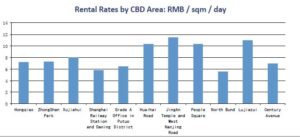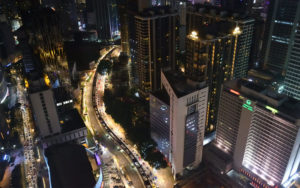Business innovation is often driven by necessity, which at times takes the form of desperation, and the real estate industry is no exception to this rule.
Investors in multi-million dollar commercial real estate projects have little incentive to innovate when market conditions favor them. They instead typically seek to turn a profit with minimal effort and overhead, their rough formula being something like: “Borrow $300 million at 6% interest rate to buy building X and lease it out with a net income of 8% to pocket the difference; no need to sweat over squeezing another 0.5% yield out of the property, just buy the next building”.
As for renovations or fire approvals or other improvements that tenants may wish to see – well, that’s the tenant’s responsibility as far as these landlords are concerned – again, when the market is smiling on them. At best, they might offer their tenant some token compensation in the form of, say, a rent-free period.
But when market conditions turn to favor tenants, landlords start singing a different tune and discover newfound powers of innovation. That’s what is happening in China’s commercial property sector these days, and below we list some examples of ‘innovations’ in industrial, office and retail that we are seeing. Some are straightforward, others more cutting-edge; not long ago in this market all would have been considered highly unusual.
1) Asset-light Models and Content Innovation
Some hotels are nowadays turning their lobbies into experience centers, renting parts of the lobby to pop up stores, art galleries and other engaging venue types that combine entertainment and commerce. One hotel chain reportedly increased income by 20% by doing this.
The Startup Factory in Kunshan serves like an incubator for industrial companies, where firms can register an industrial company with as little as one running machine and employee, relying on the incubator’s services for sales, admin, HR, finance and more.
For companies with a bigger footprint that want to be asset-light and avoid upfront investments, Plainvim International offers to take care of renovating both the tenant’s office and production areas according to their requirements, and provides many other free services including even assistance with equipment investments.

2) Leveraging New Technology
A Hangzhou office tower managed to cut operational costs by 15% through the use of IoT (internet of things) sensors and automation systems that dynamically adjust energy use. They also report to have reduced the lease-out cycle by 30% by using virtual reality office tours.
In Beijing a shopping mall decided to transform its pillars, escalators and elevators into media driven advertisement spaces, helping them to generate an additional CNY 5 million (about USD 800,000) per year. The same mall also launched an NFT-based membership program that boosted repeat purchases by around 25%.
3) Financial Flexibility and Reducing Tenant Capex
While these may not seem like true innovations and are somewhat obvious, they are for many tenants the most important of landlords’ new offerings.
• Unlike before, lease deposits are nowadays negotiable, no matter whether for factories, office developments or retail buildings.
• Long rent-free periods are now commonplace for new office and industrial leases.
• Landlords are also being far more flexible about length of lease term, and whether tenants can enlarge or decrease their rented area or even terminate their leases when needed.
• Many retail space landlords have dropped the previously required one-time upfront payment known as the ‘keyfee’.
• Retail space rents are now sometimes being capped so that a tenant pays either a percentage of its revenue as rent or an otherwise fixed rental amount, whichever figure is lower. In the past, when tenants were standing in line to get space in shopping malls, it was sometimes ‘which ever amount is higher’!
4) Focusing on Health, Nature and Sustainability
• Projects such as ‘Echo Park’ in Qingao and the ‘Rafael Sky City’ in Shanghai stand out for their commitment to health-friendly and sustainable construction, aiming at be as close to carbon-neutral and energy-conserving as possible and even going so far as to use recycled rainwater for flushing toilets.
• In Shanghai a community shopping mall installed integrated photovoltaic facades and smart lighting to reduce energy consumption by about 30%. The same mall uses rooftop farming in order to supply some hyper local produce with no transportation emissions created.
5) Re-Designing Spaces with Innovative Architecture
In order to avoid having spaces sit vacant, landlords across all asset classes are redesigning and re-purposing at least some of their gross floor area. Examples include transformation of industrial sites into loft-style retail and innovation areas, classical retail areas being transformed into areas for casually hanging out, and office buildings offering conference centers, meeting rooms and storage areas to tenants for free or minimal cost. Utilizing otherwise vacant spaces this way in some cases earns income and in other cases at least helps to raise the overall quality of the property, thereby boosting visitor and tenant satisfaction.





